By William E. Welsh
By mid-September 1944, the U.S. Third Army was poised to strike at the soft underbelly of Adolf Hitler’s Third Reich along a fabled corridor in northeastern France used for centuries by armies tramping across Europe.
Having raced 400 miles from the hedgerows of Normandy to the forested banks of the Moselle River in less than one month’s time, Lt. Gen. George S. Patton’s troops had fought desperately to secure bridgeheads in the Lorraine region from an enemy that had at last turned like a cornered animal and bared its fangs. As blue skies gave way to rainy spells signaling autumn’s approach, the U.S. Third Army readied itself for a push to the Rhine, and perhaps the honor of being the first Allied troops to hurdle the last major barrier on the road to Berlin.
Two days earlier, Patton had told Maj. Gen. Manton Eddy that his XII Corps would lead the way. “I was certainly very full of hopes and saw myself crossing the Rhine,” Patton said.
But various factors were at work to derail those hopes. A severe shortage of fuel in the early days of September slowed Third Army’s advance to a crawl, giving the Germans time to rush reinforcements from as far away as Italy to cover thinly defended sectors. By the time the Third Army had gained a firm foothold on the east bank of the Moselle in mid-September, the masterminds of the German high command had hatched plans for a bold strike to regain the initiative.
Out of a morning mist that clung like a tight-fitting garment to field and forest on September 18 rumbled factory-fresh Panther tanks toward a thin screen of men and machines guarding the Third Army’s right flank at Lunéville, in the northeast corner of France. With their high-velocity guns, the Panthers easily knocked out the Yanks’ vehicles. Panzergrenadier formations then swept forward to clear American antitank, machine-gun, and rifle positions.
The attack, which came as a complete surprise, was being orchestrated by one of the Third Reich’s most talented panzer leaders, the diminutive General der Panzertruppen Hasso von Manteuffel, whom Hitler had plucked from the Eastern Front with his staff to drive Patton’s forces back across the Moselle. Manteuffel’s goal, as head of the 5th Panzer Army on the Western Front, was to transform Lunéville into a base from which to roll up Third Army’s flank on the east bank of the river. The fight that began that morning touched off an 11-day running tank battle that raged across the hills of southern Lorraine and tested the resourcefulness of two of World War II’s most gifted practitioners of the art of mobile warfare.
Patton’s Command Under Bradley
Patton arrived in France exactly one month after the D-Day invasion to set up the operational command for Third Army. His training and experience in cavalry operations and his experience serving with the U.S. tank forces in World War I served as solid preparation for the challenges he would face as a commander when the United States declared war on Japan and Germany in December 1941.
Patton had served with competence and distinction with the U.S. forces throughout Operation Torch, the invasion of North Africa. Against light opposition, he had secured Morocco during the opening phase of Torch and ably led the U.S. II Corps when selected to replace Maj. Gen. Lloyd Fredenhall after the debacle at Kasserine Pass.
General Dwight D. Eisenhower, who was the supreme commander of Allied forces in North Africa at the time, picked Patton to lead the U.S. Seventh Army in the invasion of Sicily in July 1943. In little more than a month’s time, Patton, together with his archrival British General Bernard L. Montgomery, commanding the British Eighth Army, liberated the strategic island from Axis control.
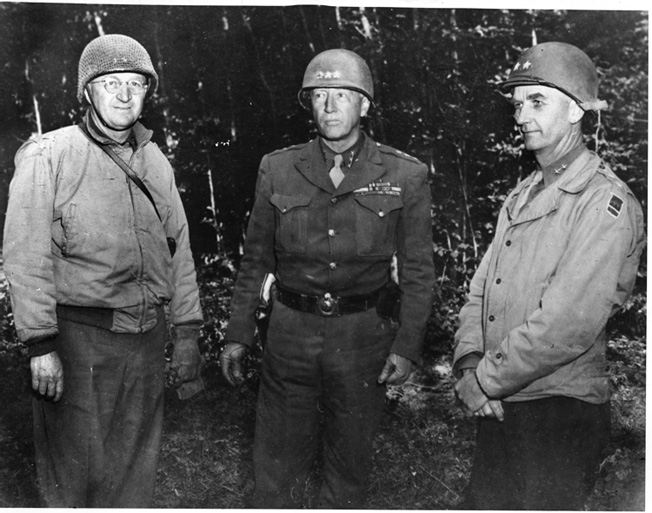
Patton might have been destined to oversee U.S. forces in the invasion of France the following year, but his inability to control his emotional outbursts and a personal sense of honor and duty that blocked him from sympathizing with the trials and tribulations of frontline troops caused him to stumble. In a widely publicized incident, he slapped and cursed a soldier suffering from battle fatigue in a field hospital in front of staff and patients. The media and public back home were outraged that a general would treat an enlisted man in such a manner. As a result, Eisenhower ordered him to make a personal apology to the soldier and also to everyone present at the time of the incident.
Patton was relieved of command in the wake of the incident but was not dismissed from war service. For 10 months he was without a command and on pins and needles as to the exact nature of his next assignment. Rather than give command of the U.S. First Army in the D-Day invasion to “Old Blood and Guts,” Ike gave it to Lt. Gen. Omar Bradley, a commander who had served directly under Patton in North Africa and Sicily. Patton would now report to Bradley. The reversal of fortune gnawed at Patton from the outset of his service in France.
The Third Army’s Drive to the Meuse
Patton was chomping at the bit to get at the Germans as soon as he arrived in France, and Bradley received permission from Ike to activate Third Army on August 1. Following the disaster at the Falaise Gap in August, where the Germans suffered 300,000 casualties, resistance had been light as the surviving German units raced east toward better defensive ground in the Ardennes and Alsace-Lorraine regions. Because of the heavy losses the Germans had sustained after the Normandy breakout, the Allies enjoyed a substantial advantage over the Germans in equipment, which amounted to a 2-to-1 advantage in artillery and nearly a 20-to-1 advantage in tanks.
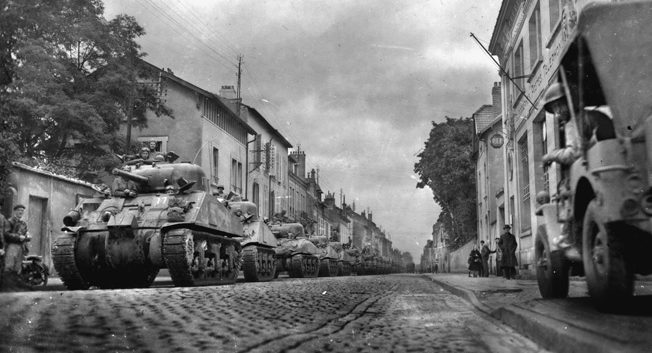
As Patton’s Third Army approached the Meuse River in late August, it paused before pushing into the Lorraine region. Third Army, which formed the right wing of Bradley’s 12th Army Group, was composed of Maj. Gen. Walton Walker’s XX Corps and Eddy’s XII Corps. Walker’s corps consisted of the 5th and 90th Infantry Divisions and the 7th Armored Division, while Eddy’s corps, at that time, consisted of the 35th and 80th Infantry Divisions and the 4th and 6th Armored Divisions. Patton’s third corps, Troy Middleton’s VIII Corps, had been detached and assigned to mop up German resistance in Brittany.
Using speed to its advantage, Third Army roared across two bridges over the Meuse River on August 31 before German forces could demolish them and slow the American advance. But Patton’s dash ground to a halt shortly after it crossed the Meuse. This was because Third Army, and the other Allied armies racing to its north, had stretched their supply lines until they snapped. Despite efforts to rush fuel to the frontline units, the Allies were still receiving their fuel from supply dumps in Normandy. By August 30, Patton’s army was receiving only about 32,000 of the 400,000 gallons of fuel it required to run all of its tanks and vehicles. For a five-day period at the beginning of September, Patton’s Third Army remained idle as German forces to their east regrouped and entrenched behind the Moselle.
Eisenhower’s Two-Pronged Offensive in Lorraine
Eisenhower issued orders in late August to all of his top commanders outlining a two-pronged offensive against western Germany in which the principal targets were the Ruhr and Saar industrial areas. The bulk of men and supplies would be detailed for the primary thrust toward the Ruhr in the north, but a secondary thrust through Lorraine was considered worth undertaking to stretch German forces along the Western Front.
Lorraine, situated in northeastern France, consists of a large plateau interspersed with forests, lakes, fields, and towns, through which the upper stretches of the Meuse and Moselle Rivers flow. It was significant to the Allies because it offered a gateway between the Ardennes and Vosges Mountains, through which Allied forces might reach Germany. The western boundary of Lorraine is formed by the Moselle Valley and the eastern boundary by the Saare River. Lying astride Third Army’s route of advance were the key cities of Metz and Nancy, both of which are located on the east bank of the Moselle. The Germans did not intended to give up either without a fight. The historic city of Metz included an extensive system of man-made fortifications from previous wars.
The task before Third Army was to establish bridgeheads across the Moselle that would enable it to capture the two strategic towns. From there, Third Army would advance along a northeast route of march toward the fortified West Wall. Once it captured the section of the West Wall protecting the Saar factories, Third Army’s next objective would be to cross the Rhine and seize Frankfurt. It was a daunting series of objectives, but Patton relished the opportunity. Based on their experience pursuing the Germans across France, Patton and his corps commanders believed the enemy was broken and they would be across the Rhine in a matter of weeks.
While waiting for fuel to arrive with which to resume his eastward advance, Patton received good news from Bradley on September 4 that he would soon receive reinforcements in the form of Maj. Gen. Wade Haislip’s XV Corps, which would guard his right flank against German forces retreating up the Rhone Valley. That same day Third Army received about 240,000 gallons of fuel, which was sufficient to resume its advance the following day.
Patton immediately issued orders to Eddy and Walker to proceed with reconnaissance-in-force missions to determine the best points at which to cross the Moselle. Eddy’s XII Corps, on the right flank, began moving up to the Moselle that same day, and Walker’s XX Corps, on the left flank, started its advance the following day. Eddy was tasked with locating possible crossing points above and below Nancy, while Walker was instructed to do the same above and below Metz. Both corps commanders had received intelligence reports that two Panzergrenadier divisions, the 3rd and 17th, were prepared to contest the crossing, and that they would likely be reinforced by surviving elements of the 21st Panzer and Panzer Lehr Divisions. By September 7, U.S. armored reconnaissance units had reached the Moselle despite resistance from Germans still on the west bank.
The German Force Opposing Patton
At the beginning of September, Patton’s Third Army was close enough to Germany to alarm Hitler. To protect the fatherland, Hitler ordered all German forces on the Western Front to hold their positions on the Moselle to allow engineers to make much-needed improvements to the West Wall fortifications.
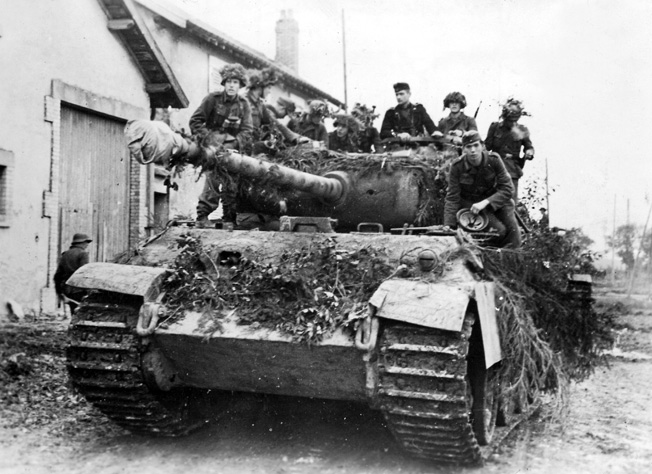
Hitler also began a systematic process to produce fresh divisions to replace those smashed by the Allies in central France. On September 2, Hitler issued orders for the creation of 25 new divisions, most of which were to be given the designation of Volksgrenadier. In addition, he ordered the creation of 10 new panzer brigades, numbered 101 to 110, each of which would boast a battalion of approximately 45 Panther tanks. A follow-on series of panzer brigades, numbered above 110, would contain a battalion of Panthers and a battalion of Mark IVs. Hitler also reappointed General Field Marshal Gerd von Rundstedt, who had been relieved of his command in June, to oversee Germany’s forces in the west.
Because the raising of fresh Volksgrenadier divisions and panzer brigades would take time, Hitler transferred two crack divisions, General Hans Hecker’s 3rd Panzergrenadier and General-Lieutenant Eberhard Rodt’s 15th Panzergrenadier, by train from the Italian front. Although Hecker’s division was at nearly full strength, Rodt’s had been depleted as a result of nearly a year of hard fighting.
Most of the forces opposite Patton’s Third Army belonged to the German First Army, which was part of General-Colonel Johannes Blaskowitz’s Army Group G. Hitler planned to increase the forces opposite Patton to the point that they would be capable of launching a strong counterattack that would rock Third Army back on its heels.
Building Up For a Counterattack
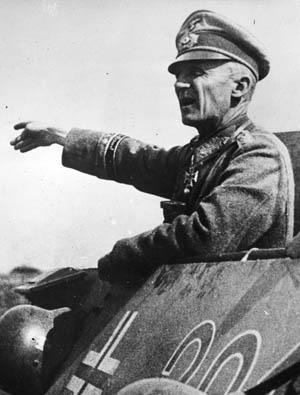
Panzertruppen Hasso von Manteuffel proved a worthy opponent to Patton.
In preparation for his counterattack, Hitler made several key command changes. On September 6, he sacked First Army commander General der Infanterie Kurt Chevallerie in favor of General der Panzertruppen Otto Knobelsdorff, who would lead German forces covering the line from Sedan to Nancy. Hitler also made preparations for the creation of a new Fifth Army to be led by Manteuffel.
Until sufficient forces were gathered for the counterattack, the frontline troops were ordered to defend as many crossing points along the Moselle as possible between Nancy and Metz. First Army’s center, which was anchored at Metz, was the responsibility of SS General-Lieutenant Herman Priess, commanding the 13th SS Corps, while First Army’s left wing at Nancy was entrusted to General der Panzertruppen Heinrich Freiherr von Luttwitz, commanding the 47th Panzer Corps.
From Metz to Nancy the Germans were deployed on the east bank of the Moselle as follows: the 559th Volksgrenadier Regiment opposite Thionville, Division Number 462 (partially composed of zealous officer cadets from the Metz service schools) and the 17th SS Panzergrenadier Division at Metz, the 3rd Panzergrenadier Division opposite Pont-a-Mousson, the 92nd Luftwaffe Training Regiment opposite Marbache, the 3rd Parachute Replacement Regiment in front of Nancy in a westward loop of the river, and the 553rd Volksgrenadier Regiment inside Nancy. All of these units suffered serious armored and antitank deficiencies. Despite the impressive numbers, the only armored unit initially available to Knobelsdorff was the 106th Panzer Brigade, one of the first of the newly formed panzer units with a full battalion of Panther tanks, which constituted First Army’s thin operational reserve.
Knobelsdorff’s Blunder
On Patton’s left wing, Walker’s XX Corps began probing the Metz defenses on September 7. Maj. Gen. Leroy Irvin’s 5th Infantry Division pushed across the swollen waters of the flooded Metz River the following day to gain a precarious bridgehead at Dornot, five miles south of Metz. Constant shelling from German long-range guns stationed at Fort Driant, an elevated outpost on the west bank of the Moselle, made it impossible for U.S. engineers to lay a bridge at that crossing. What’s more, a series of determined counterattacks by the 17th SS Panzergrenadier Division kept the U.S. infantry from expanding the bridgehead. After 48 hours of hard fighting, the bridgehead was abandoned.
North of Metz, Third Army’s left flank lay exposed, and Knobelsdorff sent the 106th Panzer Brigade to attack the Americans in an effort to keep them off balance and slow their efforts to cross the Moselle. Although the 106th Panzer Brigade was led by veterans from the Eastern Front, its crews had received very little training and the brigade suffered from a severe shortage of communications equipment essential to coordinate an assault. Nevertheless, Knobelsdorff secured permission from Hitler to use the brigade for a quick strike provided he return it to First Army reserve within 48 hours.
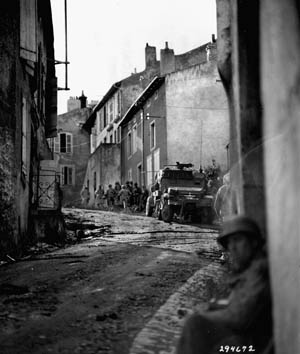
across France came to an abrupt halt at Metz, due to fuel shortages, deteriorating weather conditions, and increased enemy resistance.
After some confusion as to the location of their target, which was Maj. Gen. Raymond McLain’s 90th Division of Walker’s XX Corps, the Germans regrouped on the evening of September 7 and advanced after midnight in two columns through the village of Briey toward the American position. Having failed to reconnoiter the American lines, the Germans blundered into a hornets’ nest.
The main column found itself in the midst of the 90th Division headquarters at 3 am, and several Panthers engaged an M4 Sherman guarding McLain’s command post situated on a knoll. The German armored column continued south, hoping to stampede the American soldiers into abandoning their positions. But the Americans stood their ground. McLain issued orders for the nearest infantry regiments to converge on the enemy column.
At daybreak, the 358th Infantry Regiment attacked the column with a wide range of antitank weapons including bazookas, 3-inch guns, and 105 mm howitzers. The turning point in the battle came when a U.S. artillery observer directed more than 300 howitzer rounds onto a German column lined up on a sunken road in preparation for an assault on the village of Mairy. The strike destroyed five Panthers and 20 half-tracks. When the Germans attempted to withdraw, they found their escape route blocked by the 359th Infantry Regiment moving east to cut them off. Altogether, the 106th Panzer Brigade lost 30 tanks and 60 halftracks, which greatly reduced the role it would play in subsequent operations.
Finding A Crossing Point
Irwin’s 5th Infantry Division made another effort to secure a bridgehead across the Moselle at Arnaville, a short march south of Dornot, on September 10. This time the engineers were able to construct a bridge under the cover of darkness, but the bridgehead was again subjected to concentrated shelling by long-range guns from the Metz defenses and also from counterattacks by various elements of all three of the German Panzergrenadier divisions defending the Moselle. Against such odds, a breakout at that location was not deemed feasible.
Above and below Nancy, the Germans were content to wait for the Allies to attempt to cross the Moselle and launch local counterattacks in an effort to contain or eliminate the bridgeheads. Eddy planned to isolate Nancy in a double envelopment. He sent one regiment from Maj. Gen. Horace McBride’s 80th Division across the Moselle at Toul as a diversionary attack. But the main attacks were made by the bulk of the 80th Division north of Nancy, and by Maj. Gen. Paul Baade’s 35th Infantry Division south of the city.
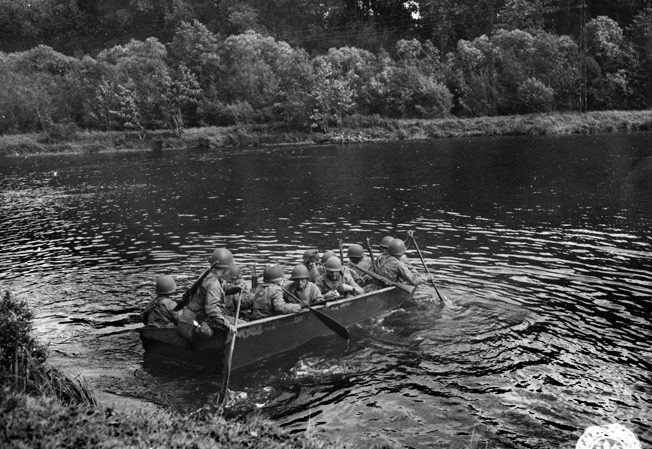
Eddy’s final plan, which was a compromise between his initial plan and that of headstrong 4th Armored Division commander Maj. Gen. John Wood, called for Brig. Gen. Holmes Dager’s Combat Command B (CCB) to assist the 35th Infantry Division south of Nancy, and Colonel Bruce Clark’s Combat Command A (CCA) to be held in reserve to exploit whichever crossing offered the most promise for a rapid breakout.
Heavy Resistance Across the Moselle
Initially, at least, Eddy’s XII Corps suffered setbacks as severe as those experienced by Walker’s corps to its north. Having reached the Moselle as early as September 5, the 80th Division attempted to gain a foothold on the eastern bank at Pont-a-Mousson. A spearhead of the 317th Infantry Regiment crossed the river in boats, but the following morning they were bombarded by German artillery and mortars, which forced them into their foxholes. The next morning, elements of the 3rd Panzergrenadier Division overran the bridgehead, killing 300 Americans.
But there were simply too many crossing points for the Germans to contest every one with such promptness as they had shown at Dornot, Arnaville, and Pont-a-Mousson. At Toul, where a great bend in the Moselle channeled the Moselle away from Nancy, the Germans were content to allow McBride’s 319th Infantry Regiment to cross unopposed on September 5. Nevertheless, the Germans established strong defensive positions in two dilapidated French fortresses that effectively blocked the western approaches to the city. The Americans captured the northern fort almost immediately, but German paratroopers held out in the southern fort for five days.
By September 10, Baade’s 35th Infantry Division was in force along the western bank of the Moselle south of Nancy. The 134th Infantry Regiment was ordered to cross on the left below Nancy, and the 137th Infantry Regiment on the right. The 134th was fortunate to find a bridge intact and threw a battalion across the river. But its fortune ended there. That evening German artillery brought down the bridge, and the 104th Panzergrenadier Regiment attacked with armor support in the dark of night, overrunning the bridgehead. Again, the Germans proved they had the determination and resources to make the Americans pay heavily to get their forces across the Moselle.
Still, the 137th Infantry Division that same day managed to establish several small bridgeheads on the eastern bank. Not content to wait for the infantry, the vanguard of Dager’s CCB managed to ford the Moselle at Bayon, where the river’s height was substantially lower because water was diverted to fill canals on each side.
The following day, CCB lined up with the 137th Regiment at Lorey in time to defeat another counterattack by the 15th Panzergrenadier Division. On September 12, engineers had laid a 168-foot pontoon bridge across the Moselle that enabled the rest of the 35th Infantry Division and the remaining tanks of CCB to cross to the east bank, Two days later, CCB had pushed through light enemy resistance to reach the Marne-Rhine Canal seven miles beyond the Moselle.
CCA’s Breakthrough
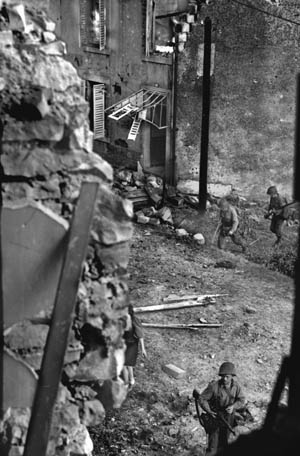
Following the setback at Pont-a-Mousson, McBride ordered his men to attempt another crossing four miles south at Dieulouard. The men of the 317th Infantry Regiment managed to cross a bridge left intact and braced themselves for a counterattack. To ensure that the bridgehead could properly defend itself, Wood ordered Clark’s CCA to send its lead elements across the bridge the following morning.
As expected, the Germans counterattacked at 1 pm on September 13 just as CCA began crossing the bridge. The 37th Tank Battalion, led by the hard-charging Lt. Col. Creighton Abrams, brushed aside German resistance and turned north to gain the east-west road leading to Nomeny.
This dramatic entrance to the battle by CCA caught the Germans off guard and paid large dividends. In the first day alone, CCA’s vanguard had advanced nearly 20 miles and destroyed a dozen enemy tanks and 85 half-tracks and captured 350 prisoners. With the vise tightening on Nancy, Blaskowitz ordered the 553rd Volksgrenadier Division to pull out of the Nancy pocket before it was cut off.
Abrams received orders from Wood to pivot south toward Arracourt, where he would be in a position to link up with CCB and complete the encirclement of Nancy. Although ordered to avoid German forces concentrated at Chateau-Salins, Abrams nevertheless overtook an armored column from the 15th Panzergrenadier Division and, in another stunning attack, captured or destroyed 26 armored vehicles and took 400 prisoners. Over the next four days, CCA raided the countryside around Arracourt, managing to destroy more enemy tanks and vehicles at a cost of only a half dozen M4 Sherman tanks.
Leclerc’s Resounding Victory at Dompaire
Two days before, Bradley had called Patton and First Army Commander Maj. Gen. Courtney Hodge to his headquarters at Dreux and informed them that the supply situation was dire. If Third Army was unable to cross the Moselle by September 14, Bradley told Patton, it would have to go over to the defensive.
The very notion was unpalatable to Old Blood and Guts. “Had I not secured a good bridgehead by that time, I was to stop arguing and assume the mournful role of a defender,” Patton said. On the day of the deadline, Patton reported to Bradley that the southern wing of Third Army had broken out of its bridgeheads and was in position to continue pushing east.
Bradley, who found the report satisfactory, passed the news to Eisenhower that Third Army was indeed across the Moselle in strength. Patton spent so much time cajoling Bradley for permission to continue his advance east and additional reinforcements that he was seemingly oblivious to the stiffening enemy resistance and to evidence that the Germans were amassing substantial reinforcements in the Nancy sector.
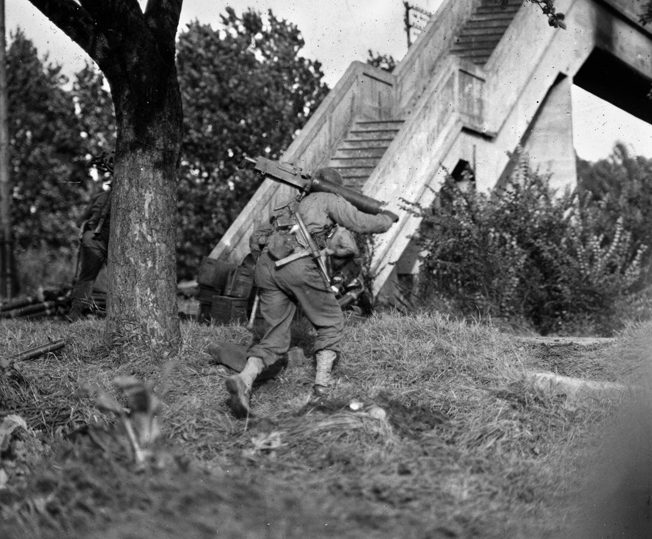
But his cajoling paid off, as Bradley had been working hard to ensure that Haislip’s XV Corps, which had been helping to clear the lower Seine of German forces, would join Third Army on its southern flank. Haislip’s arrival in early September disrupted a key element of Hitler’s plan for a counterattack against Third Army by denying the Germans a staging area on the west side of the Moselle from which they might isolate American forces on the east side.
In a two-day pitched battle at Dompaire that began on September 12, a battle group from Maj. Gen. Jacques Leclerc’s 2nd French Armored Division of Haislip’s Corps smashed the 112th Panzer Brigade of Luttwitz’s 47th Corps, which had been sent to check Haislip’s advance. The Germans failed to reconnoiter enemy positions, and their replacement tank crews were no match for Leclerc’s veteran troops.
As a result, the 112th Panzer Brigade lost 69 of its 90 tanks. Leclerc also benefited from repeated tactical air strikes by P-47 Thunderbolts of Brig. Gen. Otto Weyland’s XIX Tactical Air Command. The destruction of the 112th Panzer Brigade occurred less than a week after the equally embarrassing debut of the 106th Panzer Brigade on Third Army’s northern flank. Taken together, the losses seriously compromised the impending large-scale counterattack that Manteuffel was charged with executing.
Patton’s Planned Advance on the Rhine
Patton began drafting plans for Third Army’s advance east toward the Rhine as early as September 14. He did not expect to encounter substantial resistance until he reached the West Wall. “I was convinced then … there were no Germans ahead of us except those we were actually fighting. In other words, they had no depth,” Patton said.
His plan called for a narrowing of the front, with two corps abreast and one in reserve. Once Third Army reached the West Wall, Patton intended to concentrate his forces to achieve a breach. He was confident that Eddy’s 35th Division, with close support of the 4th Armored, could achieve a breach and hold it open to allow Third Army’s armored divisions to punch through the wall. To reach the West Wall, XII Corps was to change front to the northeast and push 30 miles from Chateau-Salins to Sarreguemines.
Though Patton had hoped XII Corps would be ready to resume its advance on September 16, Eddy informed Patton that his troops would not be ready to resume their eastward advance until the 19th, after they had mopped up German forces behind their lines. The delay would prove a costly one. Patton had been correct that the Germans possessed no defense in depth immediately after Third Army crossed the Moselle. But by the time Eddy was ready to resume his advance, Manteuffel’s Fifth Army had materialized as if out of thin air.
Manteuffel’s Counterattack
As Third Army firmly established itself on the east bank of the Moselle at Nancy, capturing not only crossing points but also key crossroads on the east bank, the Germans had to postpone their counterattack several times and continually revise it to adjust to new events. Indeed, the advance of Haislip’s XV Corps prevented German forces from assembling for their attack on the west bank of the Moselle, where they might cut off the forces on the east bank. Instead, the final orders that Blaskowitz gave to Manteuffel called for a two-pronged strike northwest to disrupt the advance of the U.S. 4th Armored Division and retake the crossroads at Chateau-Salins.
Hitler, who reluctantly agreed to a far less ambitious counterattack than initially envisioned, issued orders for the German attack to begin on September 18. Manteuffel, who had arrived to take command of Fifth Army in the field only a week before, pleaded for yet another extension, arguing that his forces were not strong enough to achieve their objective. His pleas fell on deaf ears, and he prepared to make do with the untrained and understrength units he had been given.
The reconstituted Fifth Panzer Army was inserted into Blaskowitz’s Army Group G between First Army to the north and the Nineteenth Army to the south. Luttwitz’s 47th Panzer Corps, constituting the left flank, consisted of the understrength 21st Panzer Division, the untested but intact 111th Panzer Brigade, and the remnants of the 112th Panzer Brigade. General der Panzertruppen Walter Krueger’s 58th Corps, which formed the right wing, comprised the 15th Panzergrenadier Division and the also untested but intact 113th Panzer Brigade.
Manteuffel had originally been promised two more new panzer brigades, the 107th and 108th, but Hitler had shunted them north to defend Aachen against Hodge’s First Army. Luttwitz and Krueger received their orders two days before the start date. The initial objective for both was Lunéville, which would become a staging area for a drive north to Chateau-Salins. Luttwitz would strike north toward Lunéville, while Krueger would push west along the south side of the Marne-Rhine Canal toward the town.
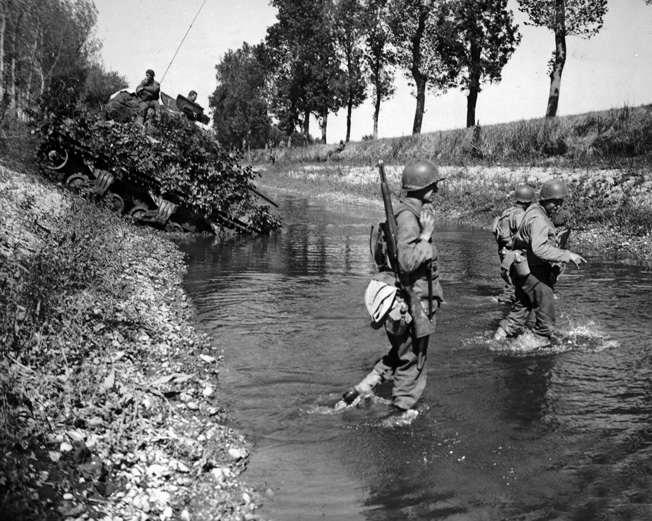
The new panzer brigades each had a battalion of Panzergrenadiers drawn from the three Panzergrenadier divisions already in Lorraine. The 111th and 113th Panzer Brigades boasted two tank battalions, one of 45 Panthers and the other of 45 Mark IVs. The 112th Panzer Brigade decimated by the clash at Dompaire, had only two dozen serviceable tanks. For its part, the 15th Panzergrenadier Division had three dozen Mark IV tanks. Significantly, none of the panzer brigades had either organic artillery or reconnaissance vehicles.
Valiant Defense by the 704th at Lunéville
Scouts from the U.S. 42nd Cavalry Squadron detected a German column approaching from the south toward Lunéville at 7 am on September 18. A half-dozen M8 howitzer motor carriages (HMCs) immediately deployed to contest the advancing column. The Panthers knocked out three of the lightly armored HMCs in short order. Despite the ferocity of the attack, the cavalry held on for four hours before it finally withdrew into the town.
American radios crackled throughout the morning with requests to rush immediate support to Lunéville. Elements of the 4th and 6th Armored Divisions, the latter which had been serving as Third Army’s rear guard, and other units began converging on the town in response. By early afternoon, the Germans were fighting their way into the southern end of the town. Through skilled use of defensive positions, the Americans stopped the Germans from capturing the town. Some of the hardest fighting was done by the 704th Tank Destroyer (TD) Battalion.
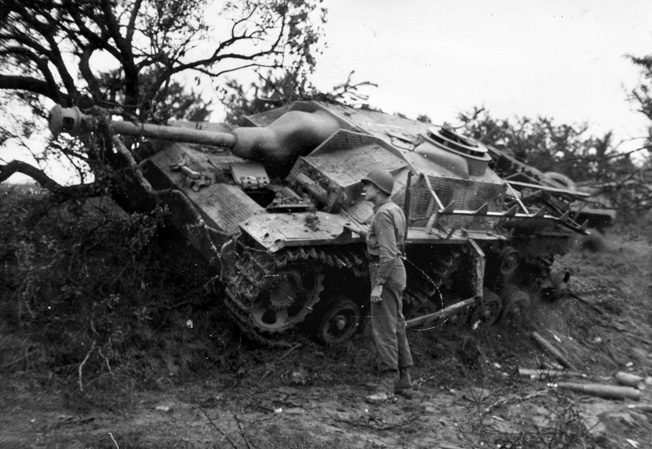
The type of close-range fighting that day is exemplified by an encounter between an M18 Hellcat of the 704th against a pair of Panther tanks. 2nd Lt. Richard Buss, commanding a platoon of M18s, ordered one of his vehicles to take up a well-protected position behind a railroad embankment with only its barrel visible. From there, the vehicle fired an armor-piercing shell into the side of a Panther in a field 300 yards away.
“Suddenly, I saw the billowing of flames,” Buss said. “The flames were transparent orange, rising with startling swiftness. They rose through the branches of the trees to a height of 60 feet. When I looked for a second target, it was gone.”
With that measure of skill, the 704th managed that day to destroy eight Panthers without losing a single tank destroyer. When Manteuffel learned that the 111th had become bogged down in Lunéville, he ordered it to break off the engagement and bypass the town to the east. As for Patton, he incorrectly dismissed the action as nothing more than another failed local counterattack. “I was determined that the attack on the Siegfried Line should go on in spite of what had happened in Lunéville,” he said.
Abrams’s Ambush
That evening Manteuffel made substantial adjustments to the German plan of attack. Because Haislip’s corps threatened his left flank, a substantial part of Luttwitz’s corps was directed to take up a defensive stance. To compensate for a reduction in forces, the main objective was switched to a strike toward Nancy to relieve those elements of the 553rd Volksgrenadier still fighting their way out of the tightening pocket.
Manteuffel’s attack for the following day involved a coordinated strike toward Arracourt using the 111th and 113th Panzer Brigades from Luttwitz’s and Krueger’s corps, respectively. Unfortunately for the Germans, the 111th Panzer Brigade became lost in unfamiliar countryside and didn’t reach the staging area at Bures until late afternoon on the 19th. This meant that two columns of tanks and half-tracks from the 113th would have to carry the objective themselves.
The eastern thrust of the 113th Panzer Brigade’s attack that day was aimed at Companies C and D of the 37th Tank Battalion guarding the eastern and southern approaches to Arracourt. When a column of 11 panzers appeared out of the mist that morning, three were immediately knocked out at close range by Shermans belonging to 1st Platoon, Company C, of Abrams’s 37th Tank Battalion in concealed positions.
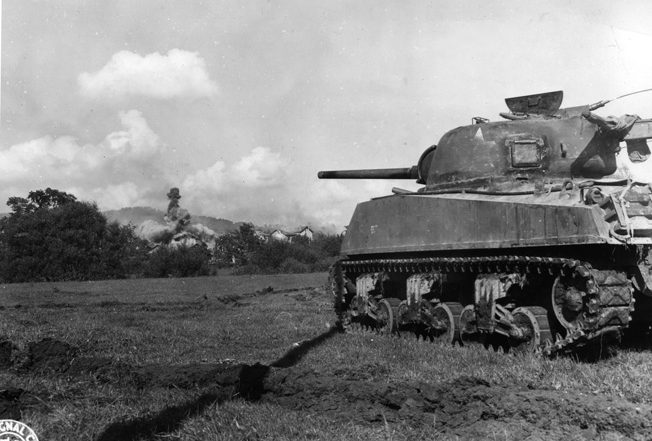
The Germans, in an effort to regroup, turned southwest to escape the ambush. Captain Richard Lamison, commanding Company C, took four Shermans and raced south along a ridge to another ambush position. The Shermans popped over the crest of the ridge and opened fire on the enemy tank column at a range of 900 yards, destroying five enemy tanks by striking them in the side. The Shermans then retreated behind the crest of the ridge and reappeared at another point to finish off the three remaining Panthers.
Meanwhile, the western thrust of the 113th Panzer Brigade that morning ran headlong into a platoon of four Hellcats from the 704th TD Battalion, which had been informed of an attack that morning and taken a defensive position in a depression in the landscape. A major firefight developed that resulted in the destruction of seven enemy tanks at the cost of three Shermans.
The Germans attacked again in the vicinity of Rechicourt in the afternoon, but after losing another nine tanks they broke off the action. The initiative then shifted to the Americans when a task force from Companies A and B of the 37th Tank Battalion swept through Rechicourt, driving the Germans beyond the town.
Total losses for the day were five Shermans and more than 40 Panther and Mark IV tanks. The light losses suffered by Abrams’s battalion were a result of his crews using their mobility to offset the advantage enjoyed by the Panther’s long, high-velocity 75mm gun over the Sherman’s short 75mm gun. The American tank crews also benefited from a hydraulic turret that allowed them to swing into firing position faster than the Germans’ slower hand-cranked traverse.
Patton drove to the XII Corps front on September 19, where he met first with Eddy and later with Wood. Patton told Wood to strike east the following day in the belief that it would keep the Germans off balance. “This I felt was particularly true against the Germans, because as long as you attack them, they cannot find the time to plan how to attack you,” Patton said.
A Day of Heavy Losses
The 37th Tank Battalion would get no rest on September 20. Most of CCA had shifted north to prepare for an advance east in the direction of the West Wall, leaving artillery and other support units at Arracourt. When a column of tanks from the 111th Panzer Brigade appeared that morning out of the fog, it was left to the gunners of the 191st Field Artillery Battalion to fight off the attack. When word reached Clark that morning of another determined attack by the Germans, he ordered the entire combat command to turn back to Arracourt and sweep the area.
Near Moncourt, just east of Arracourt, a platoon of Mark IVs and towed anti-tank guns ambushed Abrams’s Company C, leaving a half-dozen M4 tanks mangled. The tank battle raged well into the afternoon as Company B arrived to help Abrams hold back the Germans. By the end of the day the Germans had lost a dozen Mark IVs and six Panthers. It was an unusually costly day for the Americans, who lost a dozen Shermans.
Balck Replaces Blaskowitz
After two days of hard fighting, the two sides braced for more of the same. Fearing Hitler’s ire, Blaskowitz berated Manteuffel for failing to make any noticeable gains and ordered him to continue the counterattack regardless of the losses incurred. Meanwhile, Patton acknowledged that he might have to delay his advance east. “It might be impossible to complete the mission which we started out on, but we could kill a lot of Germans trying,” he told Eddy.
Hitler, who had never liked Blaskowitz, sacked him on September 21. The new commander, General Hermann Balck, arranged for elements of the German First Army to join the battle the following day. The shift in plans resulted in an ominous quiet on the front lines that day and led to speculation as to whether the Germans had finally quit their offensive. As the Americans prepared to resume their push east, the vanguard of CCA shifted north toward Chateau-Salins. This meant that CCA was now on the left flank of the Arracourt-Juvelize salient and CCB was on the right.
Out of the fog on September 22, the remaining tanks of the 111th Panzer Brigade punched like a steel fist through CCA’s cavalry screen around Juvelize. In short order, more than a half-dozen M5 Stuart tanks sat smoldering and crumpled in fields near the town. Once again, Company C of the 704th TD Battalion rushed forward to delay the advance supported by P-47s firing rockets and machine guns.
The Hellcats bought precious time for Companies A and B of the 37th Tank Battalion to rumble north from Lezey toward the battlefront. Company A, advancing on the left, gained high ground west of Juvelize, and with substantial artillery support, it checked the momentum of the enemy armor pushing south.
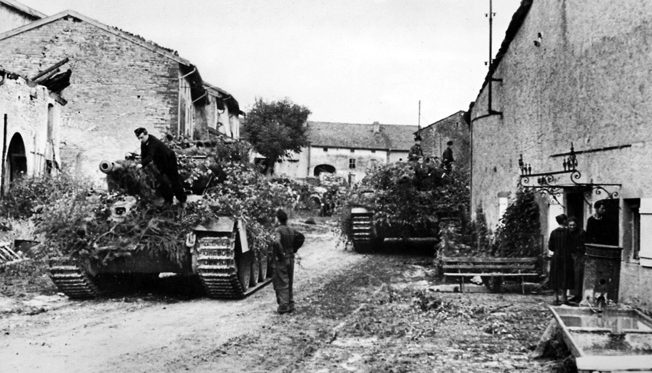
Meanwhile, Company B engaged the Germans who had taken up a strong position inside Juvelize. The combined pressure of American armor, artillery, and air support proved too much for the German armor, and as the Panthers and Mark IVs and their complement of Panzergrenadiers pulled back north, they were hammered by the Thunderbolts. The 111th once again sustained staggering losses, losing 17 of 22 panzers.
Manteuffel, who knew the attacks were hopeless but was under orders from Balck to continue regardless of the cost, threw the remnants of the 111th and 113th against CCA again the following day, only to suffer further tank losses. Equally devastating was the loss of both panzer brigade commanders during the two-day assault on CCA’s left flank. During the fighting around Juvelize, the Americans lost 14 Shermans and 7 Stuarts. The fighting resulted in the final destruction of two panzer brigades. By the end of the day on September 22, the 111th Panzer Brigade had only seven tanks from an original strength of 90 when the offensive started a week before.
Patton on the Defensive
Patton received orders from Bradley on September 23 to switch to a defensive position until further notice. Events in the northern sector made it necessary to divert precious fuel and ammunition to British and American units in that sector, which meant that Third Army would have insufficient resources to sustain prolonged offensive action. The news came as a hard blow to Patton, whose spirits had been riding high with the prospect of pushing through the West Wall to the Rhine. In addition, Eisenhower and Bradley had decided to transfer Haislip’s XV Corps to Lt. Gen. Jacob Dever’s Sixth Army leaving Patton once again with just two corps. In response to the changing circumstances, Patton issued orders on September 24 for CCA to pull back from Juvelize to Arracourt to lessen its exposure to any subsequent enemy attacks.
Balck expanded the fight by committing units from Knobelsdorff’s First Army to the battle on September 24. He ordered Knobelsdorff to attack Dager’s CCB with the 559th Volksgrenadier Division and the remnants of the 106th Panzer Brigade. Unlike Manteuffel’s forces, Knobelsdorff’s had artillery with which to support an attack. A heavy artillery barrage preceded an attack near Chateau-Salins by two regiments supported by tanks across flat ground against U.S. forces in defensive positions on a long ridge.
The Sherman crews could do little to deter the advancing Panthers because of the excellent sloped and thick frontal armor the enemy tanks possessed. To descend the ridge and maneuver against the Panthers would have exposed the Shermans to the Panthers’ highly effective guns. The Shermans therefore attempted to use the ridge for cover and engage the Panthers head-on, with disappointing results.
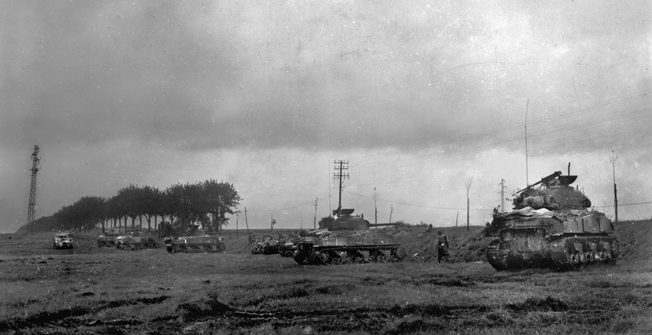
Although the day was cloudy and wet, two squadrons of P-47s from the 405th Fighter Squadron were able to navigate to the area using their cockpit instruments and instructions from ground spotters. They swooped in at extremely low level, catching the German tank crews by surprise. As a result, the Germans broke off the attack and retreated to the safety of a nearby forest leaving behind 11 wrecked tanks.
Panzer Attack on Moyenvic
Because Knobelsdorff had no better luck than Manteuffel against the Americans, Balck returned control of the offensive back to Manteuffel. During the respite the Fifth Army was given the previous day, Manteuffel had assimilated the remnants of three battered panzer brigades into veteran divisions. The German high command also reinforced the Fifth Panzer Army with Gen. Lt. Wend von Wietersheim’s 11th Panzer Division.
In effort to ensure greater success, Manteuffel ordered a detailed reconnaissance of enemy positions. German scouts reported to the Fifth Army commander that the crossroads of Moyenvic, four miles northeast of Arracourt and three miles west of Juvelize, was unguarded and could readily serve as the gateway for an attack. Having mustered 50 tanks for the attack, Manteuffel ordered Wietersheim to capture Moyenvic and inflict as much damage as possible on CCA. The Germans gained considerable ground on the morning of September 25, but the attack ground to a halt when the Germans were unable to dislodge CCA units from high ground northeast of Arracourt.
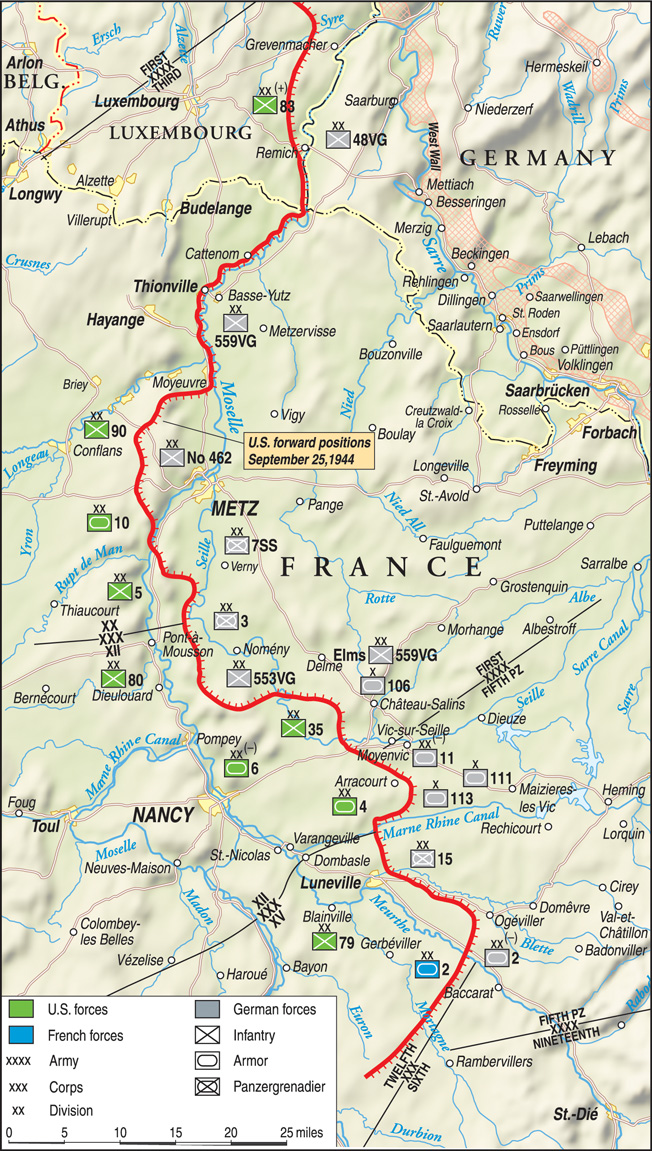
The attack on the 25th was not substantial enough to disrupt a shuffling of U.S. forces in the Arracourt sector. The 37th Tank Battalion was sent to the rear to rest and refit. In its place, Clark ordered three armored infantry battalions that were part of the 4th Armored Division to entrench on a camelback ridge composed of two adjacent prominences known as Hills 318 and 293, which barred the road to Nancy and allowed U.S. guns to sweep German positions to the east and south.
In addition, Wood ordered CCB to shift to CCA’s right flank to cover the ground between Rechicourt and the Marne-Rhine Canal. To cover CCB’s former position in the line, Baade’s 35th Infantry Division advanced to a new position west of Chateau-Salins. The Germans, who observed the Americans pulling out of Juvelize, occupied the abandoned town the following day.
The Fight For Hill 318 and Hill 265
Manteuffel’s plans for September 27 called for Wietersheim’s 11th Panzer Division to seize the camelback and Arracourt, opening the road to Nancy. The plan called for a diversionary attack at daybreak by elements of the 11th Panzer Division against the 10th Armored Infantry Battalion atop Hill 265, another key position held by the Americans. The main attack would come from the town of Bures to the south, where Manteuffel had scraped together a battle group composed of 30 tanks and assault guns to capture the camelback.
The Germans attacking toward Hill 265 captured several key towns, one of which was Xanrey, a few miles northwest of Arracourt. Yet Abrams’s 35th Tank Battalion counterattacked in the afternoon and recaptured the town in a fight that inflicted substantial casualties on the Germans.
Meanwhile, the main attack that morning by the Germans against the 51st Armored Infantry Battalion of Dager’s CCB occupying the camelback was broken up by the concentrated fire of six artillery battalions. Wietersheim ordered the battle group to break off its attack until the following day so that reinforcements could be sent to Bures. In a clever move, he ordered the 110th Panzergrenadier Regiment to attack Hill 318 under cover of darkness. The Panzergrenadiers methodically fought their way up the southern slope, clearing Americans from their foxholes. By dawn the Germans had seized the crest of Hill 318.
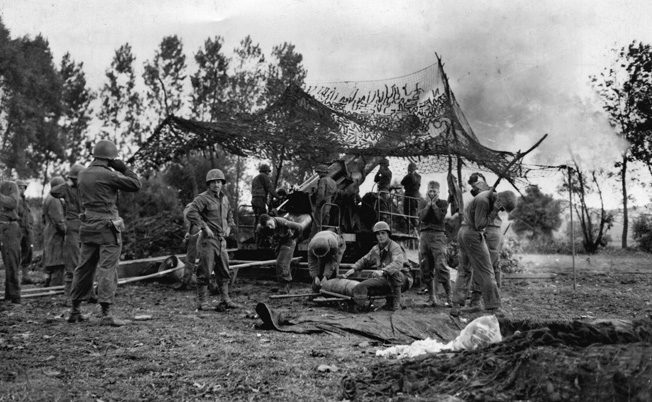
Control of the crest of Hill 318 shifted back and forth on September 28. Both sides employed heavy guns to shell enemy forces clinging to their respective slopes. While the fighting raged, P-47s flew repeated sorties against Bures, through which the Germans were funneling fresh troops and ammunition into the battle. Desperate to achieve their objective, the Germans toiled throughout the day to construct strongpoints and establish camouflaged positions on the southern slope to support their attack. Charging up the slope after nightfall, the Germans once again seized the crest, forcing the Americans to retreat to the northern slope.
The Germans attacked along the entire line on September 29, and Wietersheim committed his final reserve of 40 tanks to the fight for Hill 318. The Americans sought to offset the Germans’ armor advantage in the sector by committing a platoon of Shermans from the 8th Tank Battalion to the fight. The day dawned with a thick blanket of fog shrouding the crest of the hill. The Shermans, which went into action in the morning, knocked out eight enemy tanks in quick order.
Before more German tanks could ascend the hill, P-47s swooped in with bombs and rockets after the fog burned off, breaking up a counterattack. Although the Panzergrenadiers on the crest had managed to hold on during the morning, the combined pressure of American ground fire and air strikes finally broke the enemy’s nerve and the ground troops began retreating down the southern slope in the afternoon.
To the north, German infantry launched a determined attack to seize Hill 265, but they could not prevail against entrenched forces with a clear advantage in artillery support. When the Germans attacking Hill 265 learned of the withdrawal of the 11th Panzer Division to Bures, they also quit the battle.
Patton’s Lessons From Arracourt
Like his counterpart, Balck was loath to go on the defensive but found he had no choice. Balck requested that Rundstedt provide Army Group G with three fresh divisions and 80 additional tanks and assault guns to continue the fight. But his request was denied as by then both sides had shifted the bulk of their resources to the northern sector.
Although the 4th Armored Division lost 48 tanks in the fighting around Arracourt in September, the Germans lost 285, which constituted most of the replacement tanks sent to the Western Front that fall. From the standpoint of losses in men and equipment, the Arracourt battles were a resounding victory for the Americans. Still, Walker’s XX Corps remained stalled before Metz, even though Eddy’s XII Corps had advanced well beyond its Moselle bridgeheads.
Patton’s triumph of the summer in which Third Army raced across France against light opposition had given way to the hard reality of bitter fighting along the Moselle line. Patton’s notion that Third Army could cross the Moselle with ease and cover the 40 miles from the river to the West Wall in a matter of weeks had been shattered by Manteuffel’s determined, if futile, counterattack in September.
Patton had seriously underestimated the Germans’ ability to recover from setbacks and mount a tenacious defense as the Western Allies neared the German border. The initial counterattacks against Third Army’s bridgeheads should have convinced him that the enemy was regaining strength. Old Blood and Guts’s fixation with supply problems and haggling with his superiors over reinforcements had distracted him from the detailed planning necessary to get Third Army’s divisions across the Moselle as quickly as possible. What’s more, his decision to advance on a broad front ran contrary to the general understanding that it was necessary to concentrate forces to create a sizable breach worthy of exploiting in the enemy’s main line.
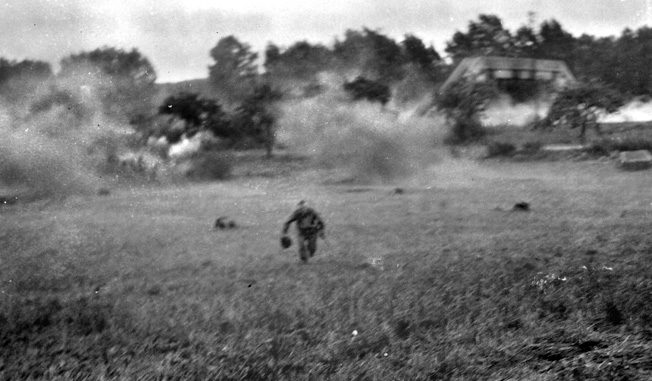
Patton would face significant leadership and tactical challenges in the region in the months following the Arracourt clashes. His high hopes for a rapid advance to the West Wall would be dashed as heavy rains over the next two months restricted Third Army’s tank columns to primary roads and sharply curtailed tactical air support. Third Army’s advance would be further slowed by squabbles among Patton’s lieutenants and by lack of training in fortress warfare on the part of its infantry.
To succeed in Lorraine, Patton would have to exercise careful planning, make quick tactical adjustments, and adjust his goals and expectations when the weather failed to cooperate. The Lorraine campaign would test Patton and his men as they had never been tested before.
This is Part One of a Three Part look at Patton’s Lorraine Campaign. Click here for parts Two and Three.
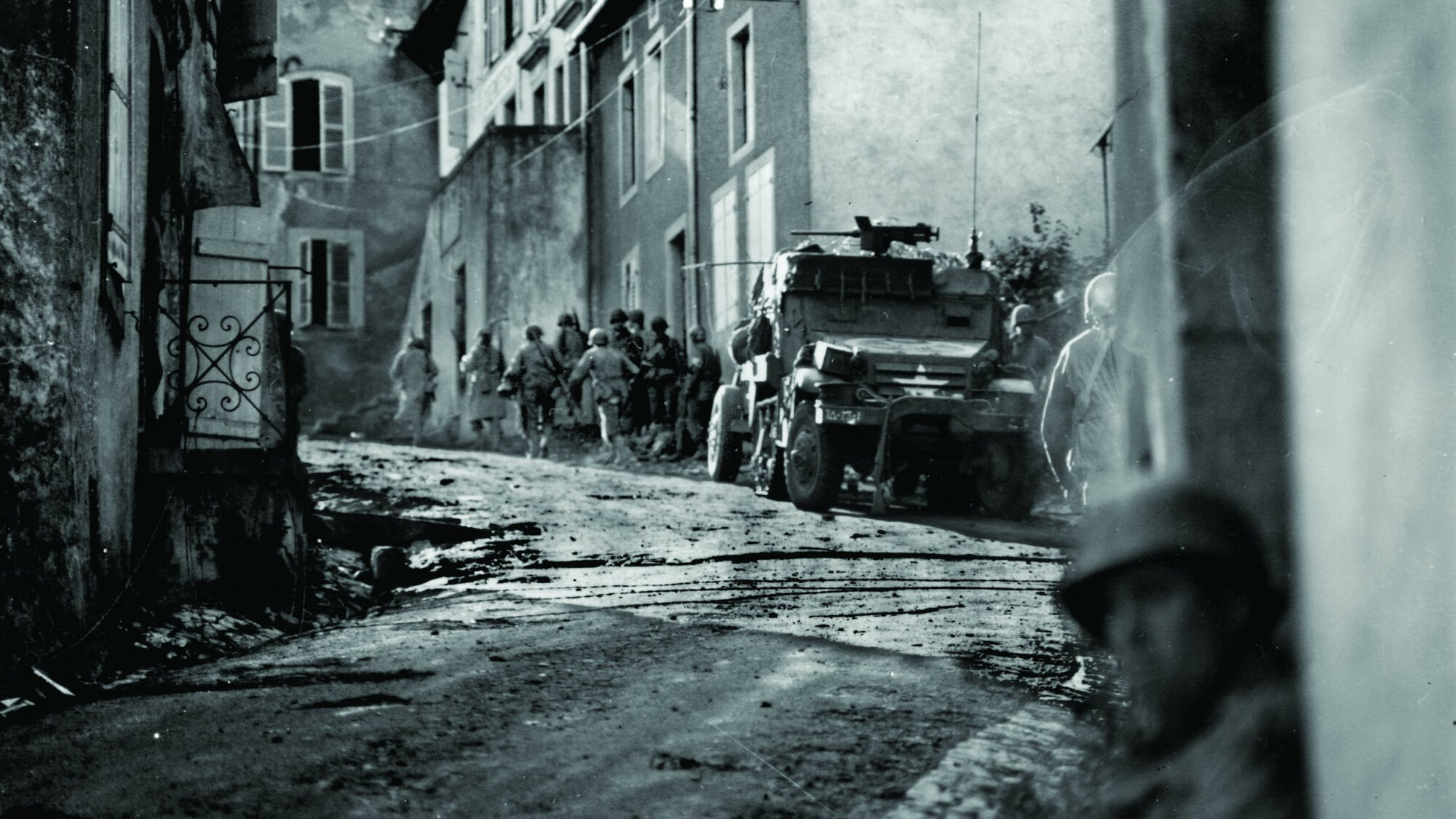
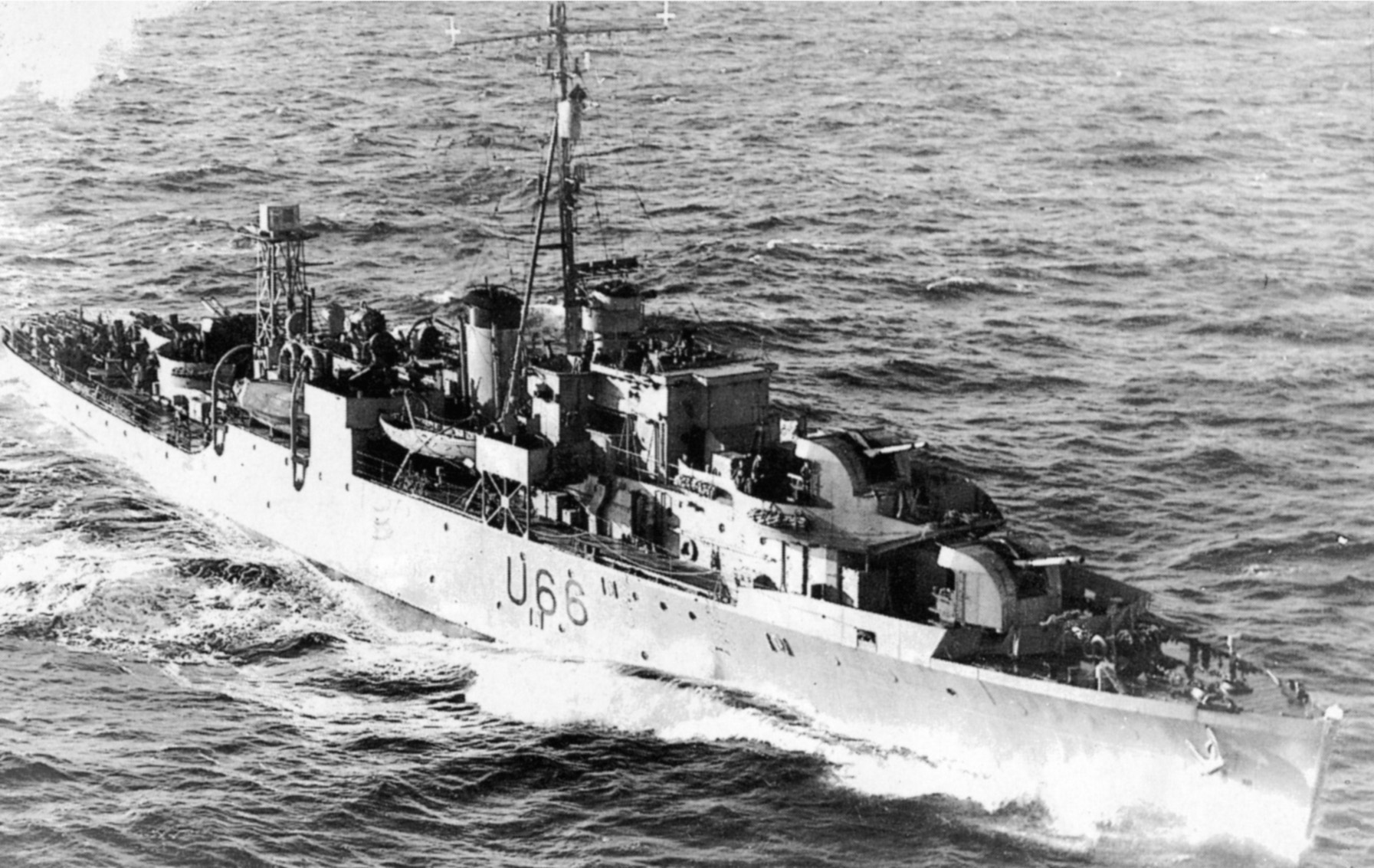
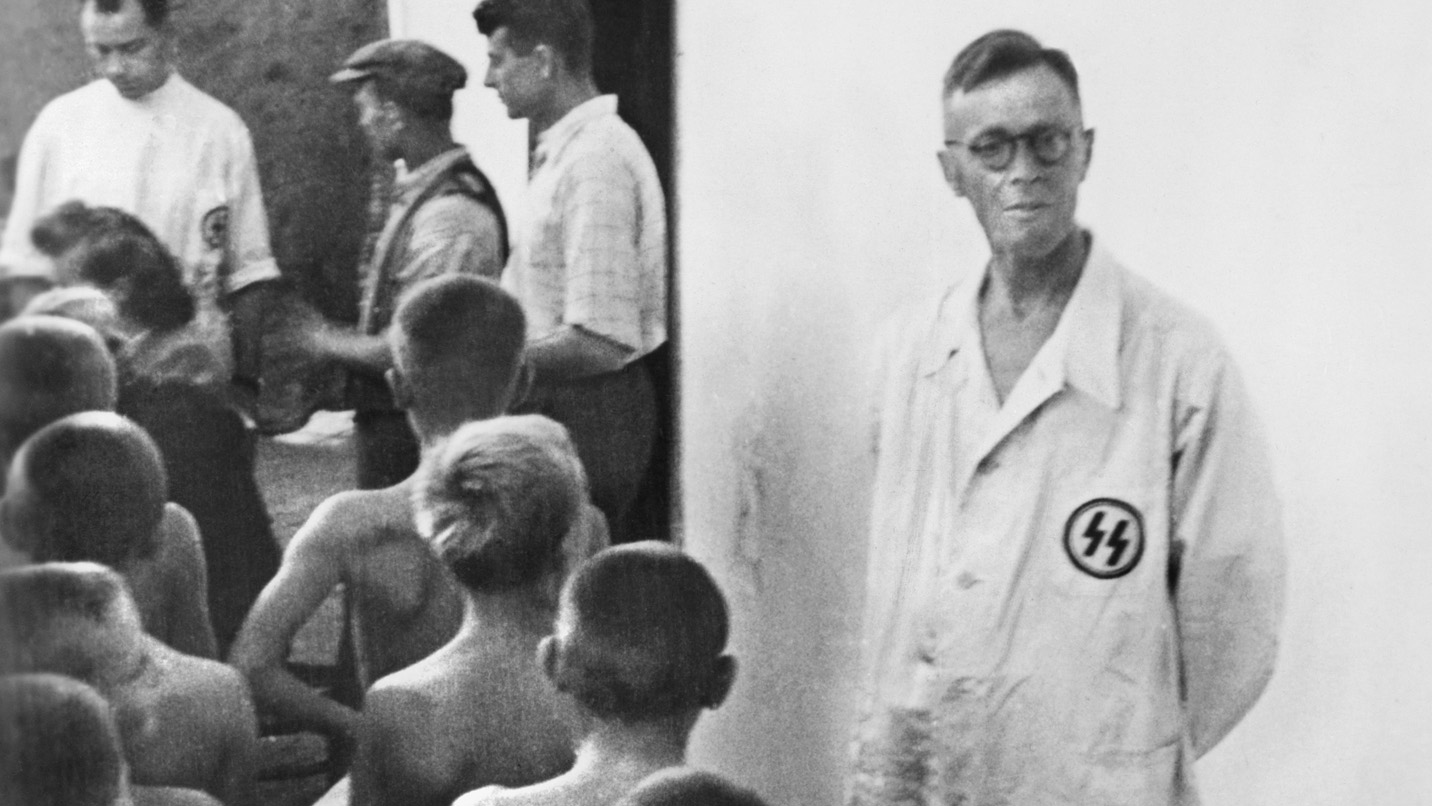
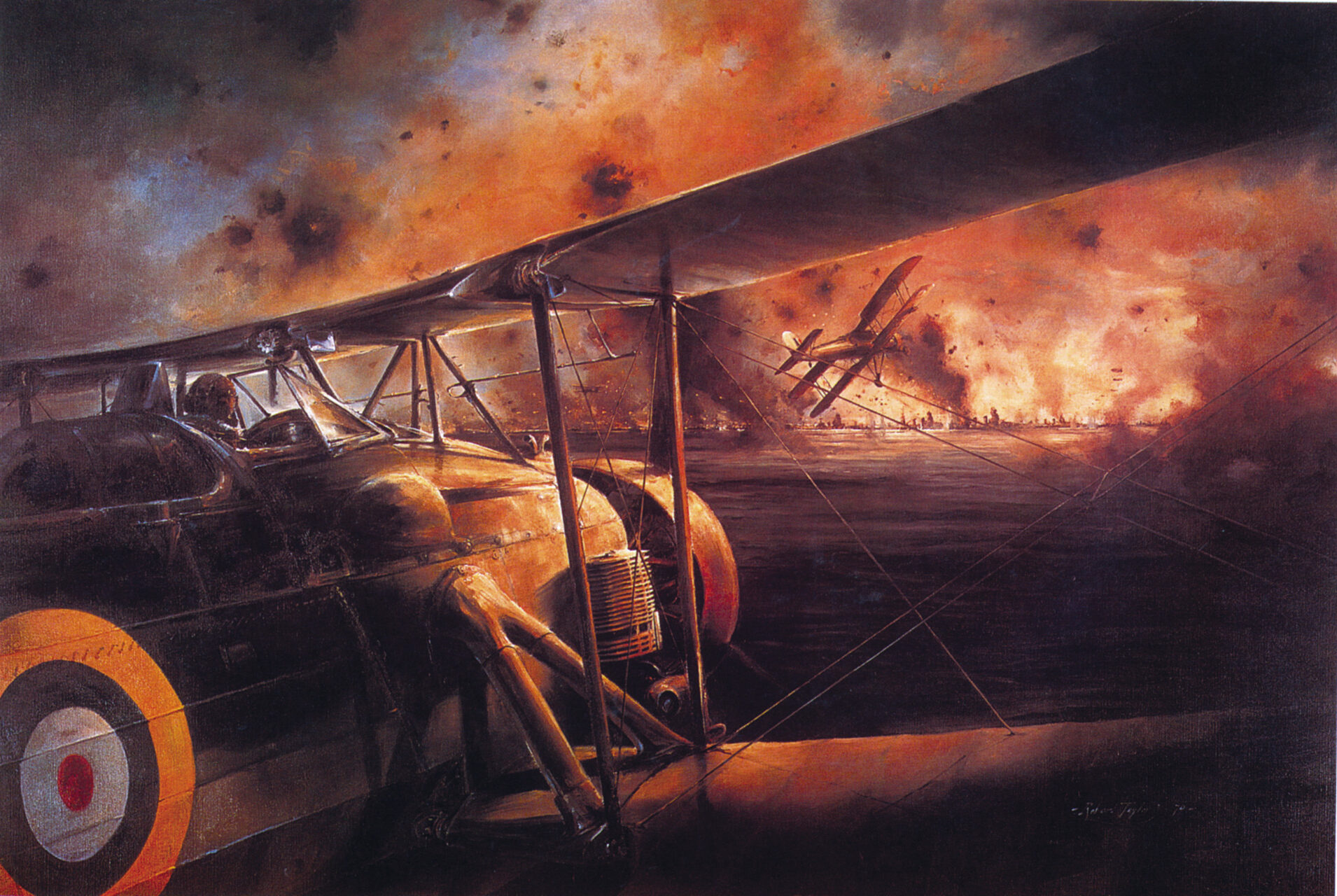
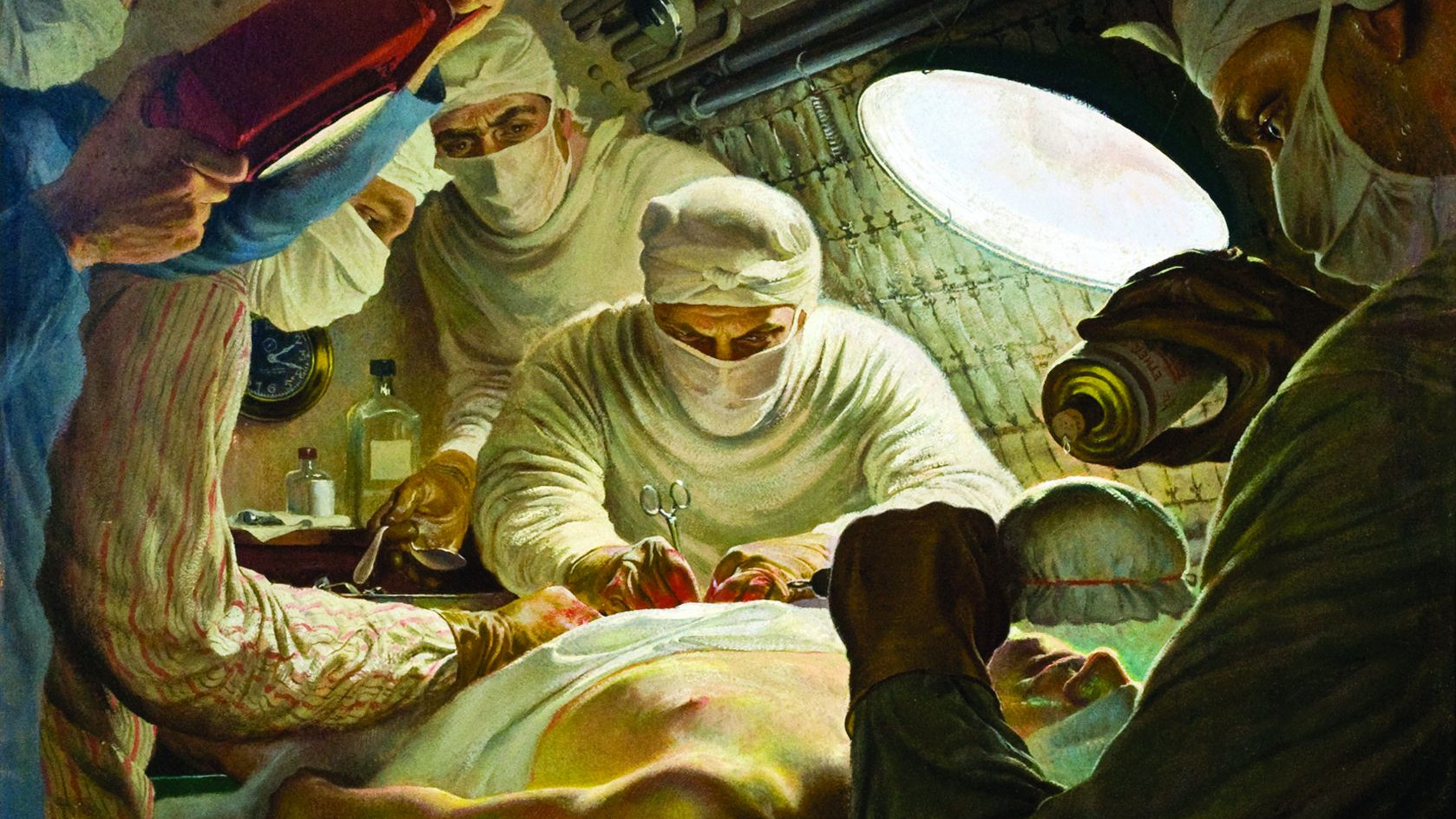
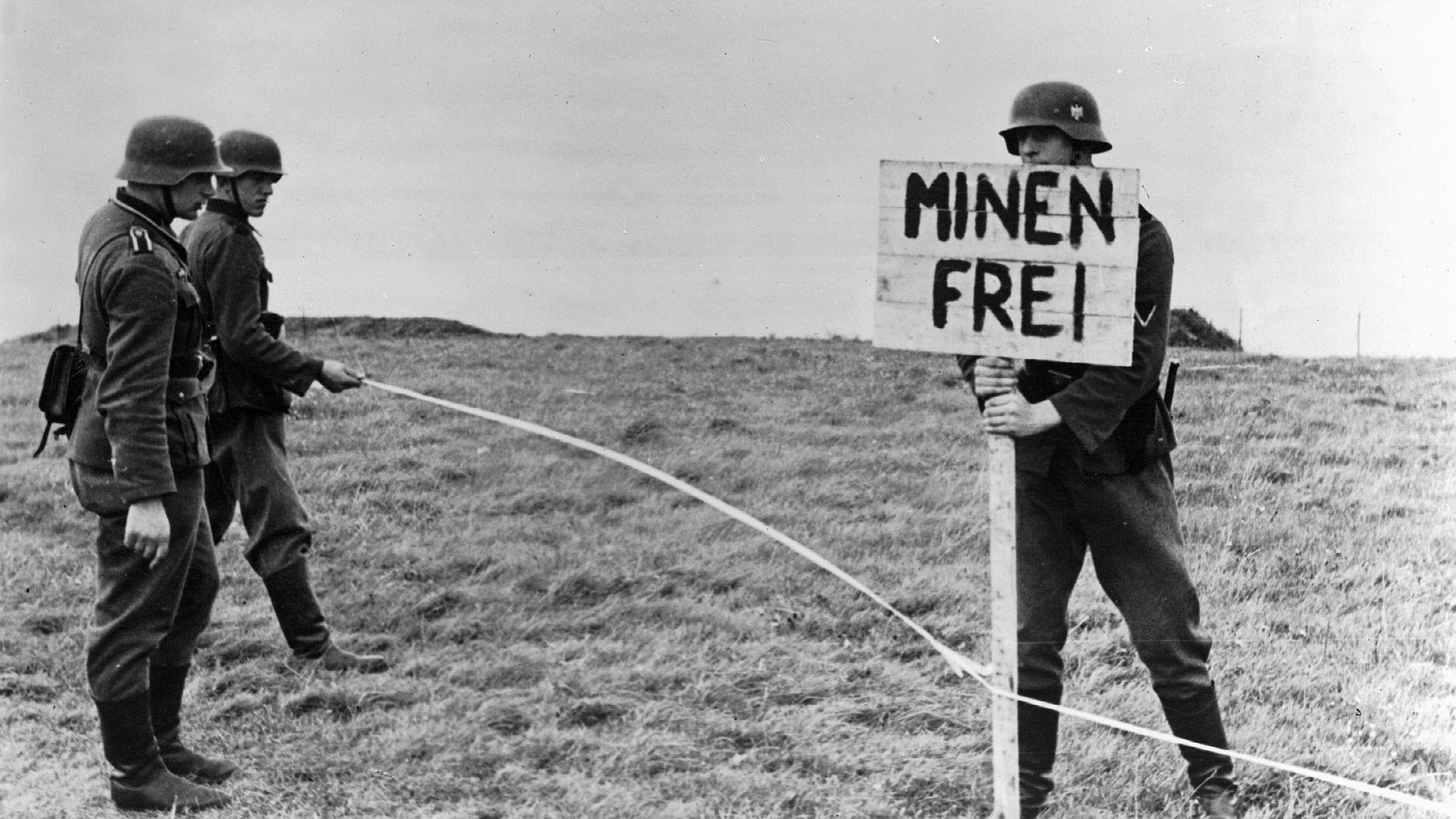
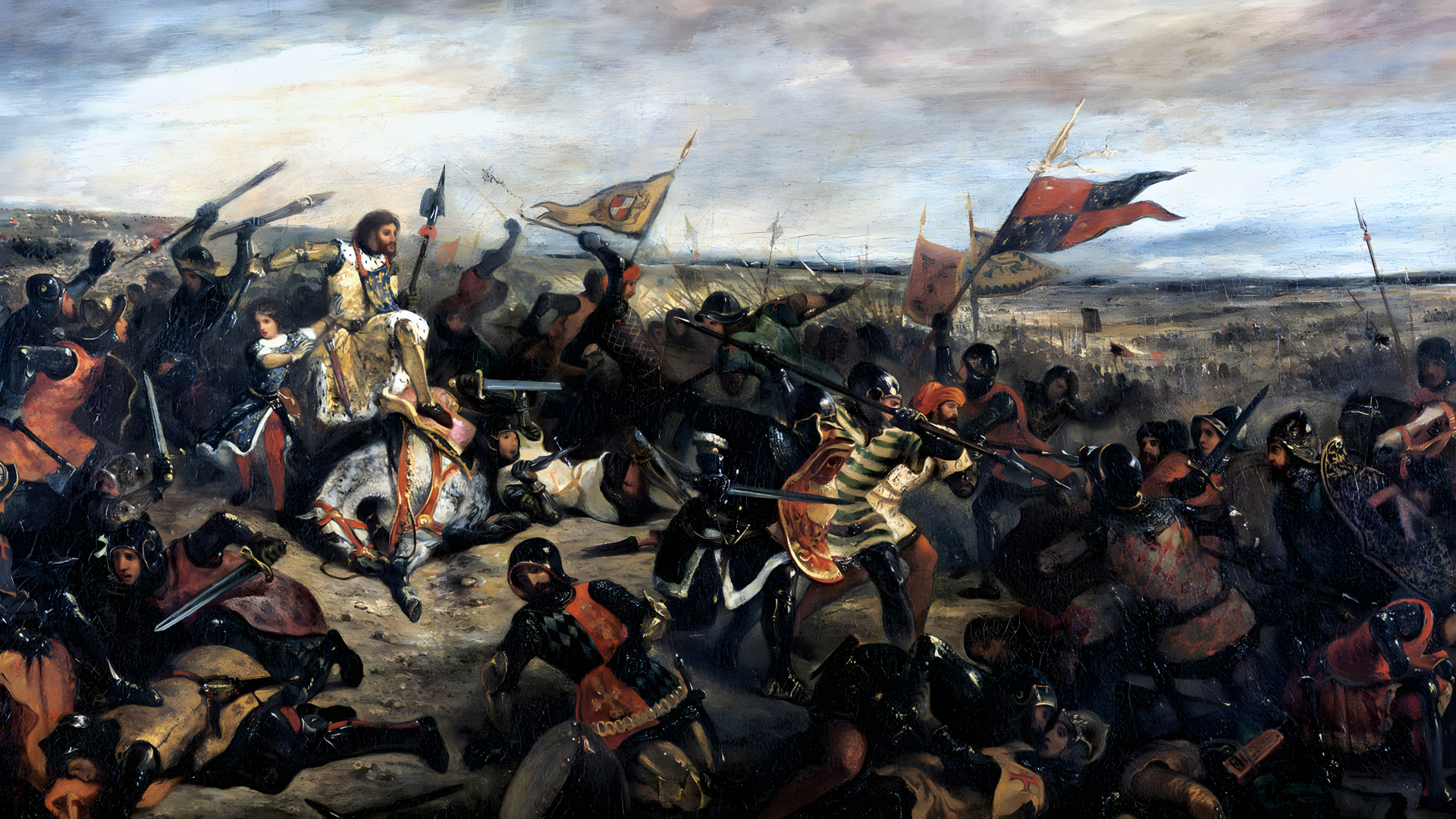
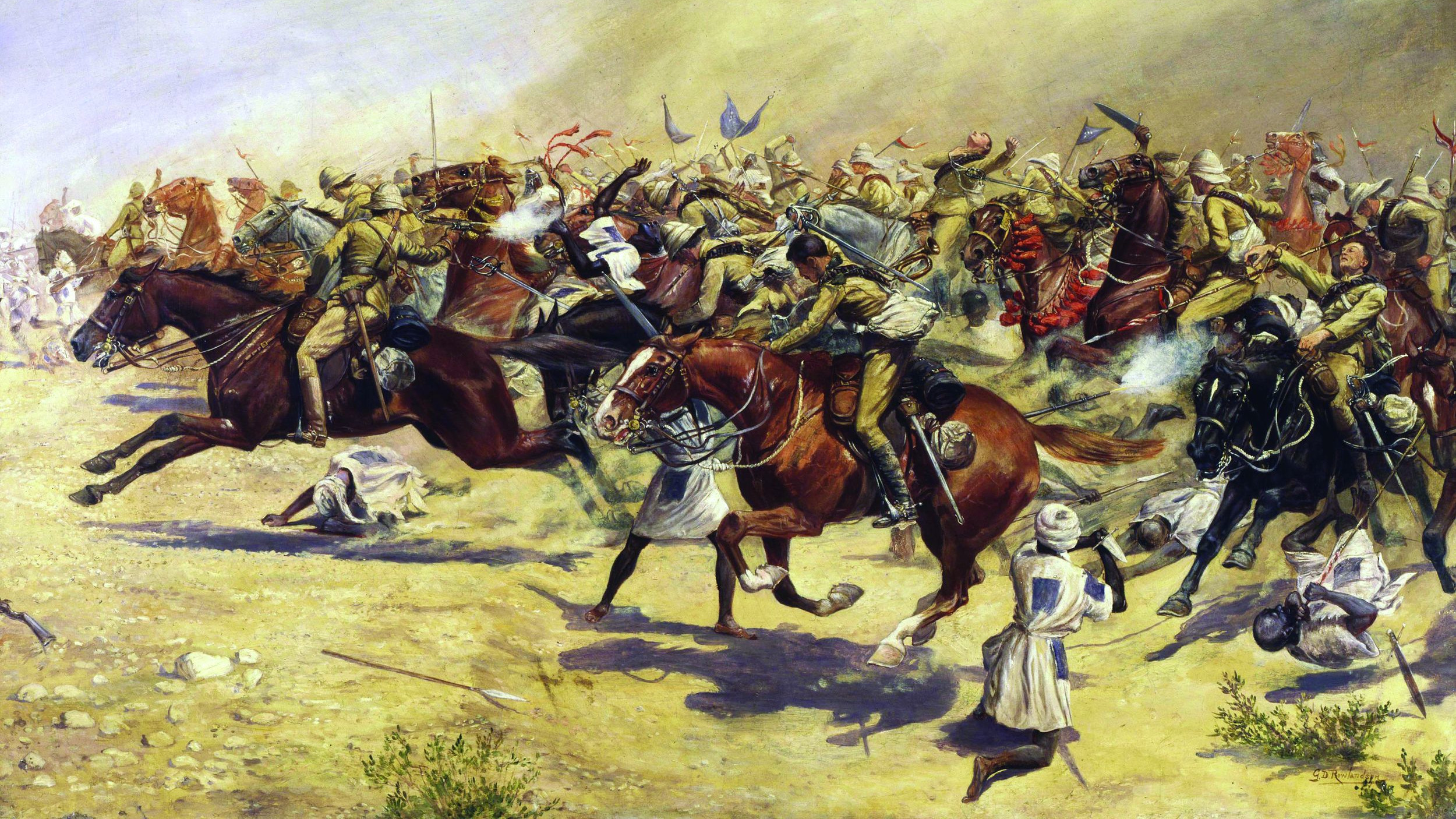
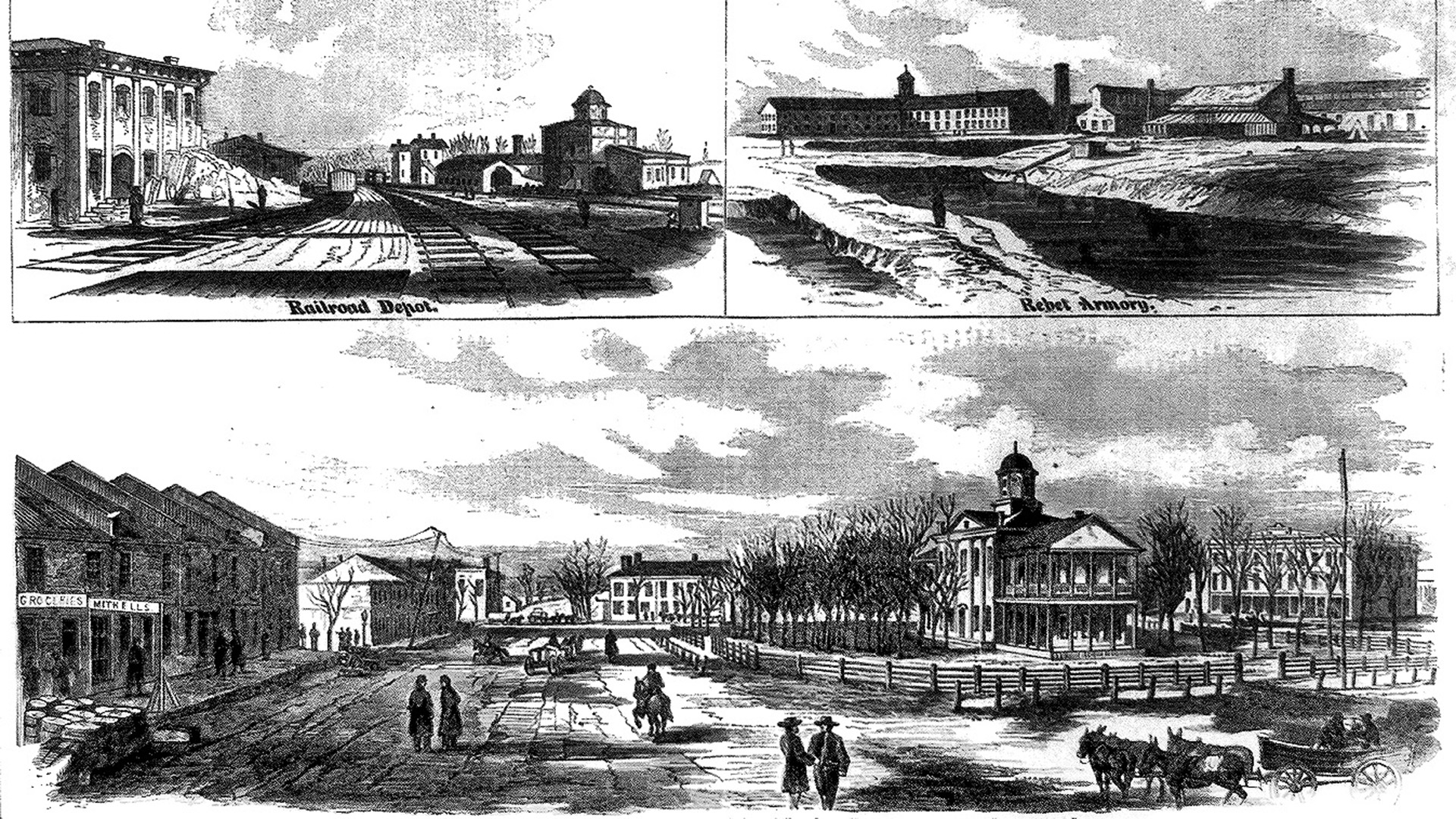
Great article cannot wait for the rest of the battle
I am trying to find out more about where and in what battle my Dad, Donald Mansfield was shot. I know that he carried the BAR and he was in Company A, 359th Infantry Regiment. He received the Bronze Star and was shot on or about 28 September, 1944. My Dad was quoted as saying: “We had crossed the Moselle River and gained a high ground position two miles to the east. While we were digging in for the night, the Jerries sent over a heavy artillery barrage.
If you supply any information, it would be appreciated by his family.
Thank You,
Leslie Mansfield, (daughter)